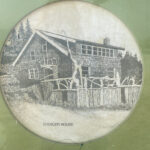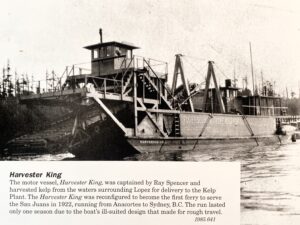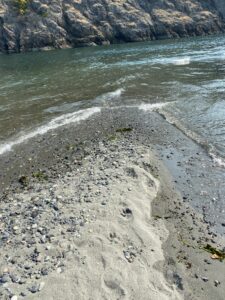
 Recently, I took a trip to Ferndale, Washington to visit my daughter, Amy Royce, her husband, Travis, and kids Shai and Caalab. While I was there, Amy, Shai, and I took a side trip to Lopez Island. Amy had been looking for things to do while I was there, when she came across Spencer Spit. A spit is a narrow coastal land formation that is tied to the coast at one end. Spits frequently form where the coast abruptly changes direction and often occur across the tidal mouth of a large river, where the tide meets the stream.
Recently, I took a trip to Ferndale, Washington to visit my daughter, Amy Royce, her husband, Travis, and kids Shai and Caalab. While I was there, Amy, Shai, and I took a side trip to Lopez Island. Amy had been looking for things to do while I was there, when she came across Spencer Spit. A spit is a narrow coastal land formation that is tied to the coast at one end. Spits frequently form where the coast abruptly changes direction and often occur across the tidal mouth of a large river, where the tide meets the stream.

Spencer Spit was of particular interest to me, because it was owned by a Spencer family, up until 1967 anyway. It was then that Raymond Spencer who decided to sell the land to the state of Washington to be a park. The area had been owned off and on by the Troxell and Spencer families since the 1880s, but the details are a bit sketchy. The two families apparently traded the land back an forth for a while. In 1886, the Spencer family took possession of the land, and it was there that their son Raymond was born a year later. In 1888, Franklin Troxell came to the land and received a land grant under the Homestead Act. He built the house that stood until 1979. He also built a stone and timber shed in the early 1950s. Those structures still stand today. There was also a guest house built out on the spit where friends and family stayed. It was later torn down. A picnic shelter stands in its place now.


From 1918 to about 1922, Ramond Spencer captained a kelp harvester ship in the waters around Lopez Island, called Harvester King. They harvested kelp for the Kelp Plant. Then in 1922, the ship was reconfigured to ferry cars. It was the first ferry to serve the San Juan Islands, but after one season, it was decided that the ship was not really suited to the job of ferry boat. The ride was just too rough, so it was beached in Olympia until she was ultimately scrapped. Apparently while kelp is used to make fertilizer today, it was not as successful back then. I guess that Harvester King was simply ahead of her time. Maybe if she had been built a few decades later, she would still be operating today.


Leave a Reply